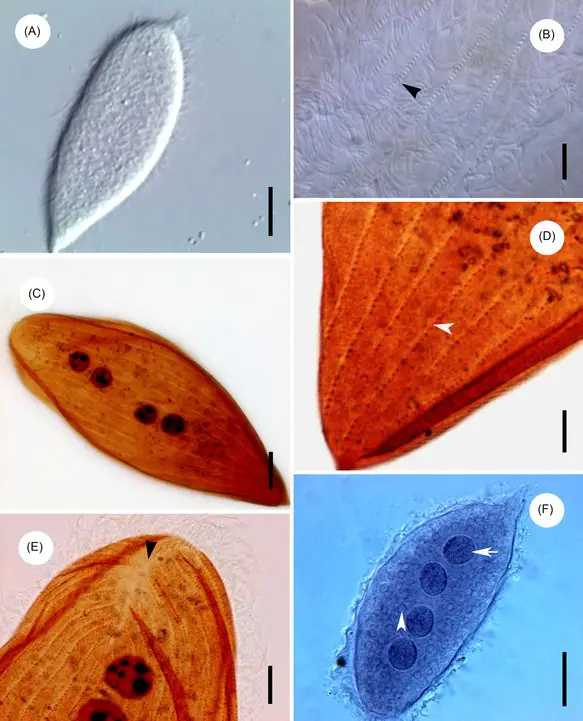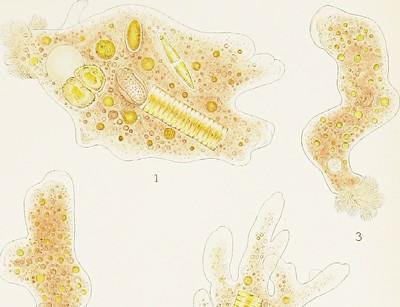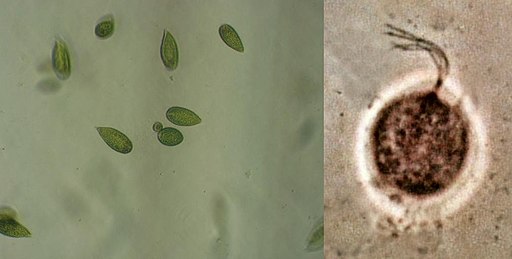Subphylum Plasmodroma
Classification, Examples and Reproduction
Definition: What is Plasmodroma?
Like Ciliophora (characterized by the presence of cilia), Plasmodroma is a subphylum of the Phylum Protozoa. Generally, it consists of simple and primitive protozoa that are characterized by the presence or absence of pseudopodia or flagella.
While some of the species use either of these organs for locomotion, none has been shown to have cilia. With four different classes classified under the subphylum, this group consists of both free-living and parasitic organisms that can be found in different habitats/environments.
Some of the organisms that belong to the subphylum Plasmodroma include:
Classification of Plasmodroma
Kingdom: Protista - This kingdom consists of eukaryotic organisms that are not animals, plants, or fungus. The majority of organisms in this kingdom are unicellular and are ubiquitous in nature.
Phylum: Protozoa - The phylum protozoa consist of a wide variety of microscopic organisms that may either exist as single cells or in colonies. They are all eukaryotic and depend on organic matter as a source of energy.
Subphylum: Plasmodroma - Plasmodroma is a subphylum under the phylum Protozoa. Members of this sub-phylum use pseudopodia or flagella for locomotion (though some species lack either of these organs).
The sub-phylum is further divided into four classes that include:
- Mastigophora
- Opalinata
- Sporozoa
* Here, it's worth noting that this method of classification (proposed by Hyman (1940), Hickman (1961), and Storer (1965)) is largely based on the mode of locomotion of the organism.
Rhizopoda
In some books/classifications, Rhizopoda is included as a class of the subphylum Plasmodroma. Rhizopoda consists of amoeboid protozoa that move and trap food by means of arm-like projections known as pseudopods (temporary extensions of the cell).
Depending on the organism/species, the form of pseudopodia varies from a simple lobopodium which is lobe-like to reticulopodia that resemble fine threads. Differences can also be identified based on their general appearance. Whereas some of the species are contained in perforated shells, others like amoebas exist as naked forms.
Some of the other characteristics of Rhizopoda includes:
Reproduction in Rhizopoda
In Rhizopoda, reproduction is primarily through binary fission to form two daughter cells (a form of asexual reproduction). In some of the species, this has been shown to occur without the breakdown of the nuclear envelope. Apart from binary fission, some of the species reproduce asexually through multiple fission, a process that produces more than two daughter cells.
While sexual reproduction is less common, it occurs through a process known as conjugation. Here, two members (e.g. different strains) join and exchange genetic material. This is particularly important given that it infers new genetic characteristics to the organisms which can play an important role in their survival.
Mastigophora
Found in both fresh and marine water environments, members of this group move from one point to another by means of one or several flagella and are therefore described as flagellates in some books. To trap food, some Mastigophora have been shown to produce pseudopodia (temporary cell protrusions).
Like many of the other organisms classified under the subphylum Plasmodroma, members of this group are unicellular heterotrophs that depend on organic carbon compounds as a source of energy. While some of the species are capable of sexual reproduction, asexual reproduction (through binary fission) is the primary mode of replication in Mastigophora.
Some of the other characteristics associated with Mastigophora include:
- Some species are parasitic in nature (and can cause such diseases as sleeping sickness in man) while others live freely in their environment
- Some can form a cyst
- Covered by pellicle
Reproduction in Mastigophora
Like Sarcodina, reproduction is primarily through binary fission. However, sexual reproduction (through syngamy) has also been observed. Also referred to as copulation, syngamy involves the fusion of opposite sex cells (gametes) to produce a zygote known as synkaryon.
Opalinata
The class Opalinata consists of endoparasites typically found in cold-blooded vertebrates (frogs, fish, etc). Members of this group are characterized by unusually large cells that contain two (e.g. in Zelleriella) or more (as many as 100 e.g. Cepedea) nuclei.
Like many other members of the subphylum Plasmodroma, opalinids also move by means of flagella. However, their flagella are shorter in length and arranged in longitudinal rows.
While they exist as parasites of various cold-blooded organisms, their pathogenic effects have been shown to be significantly lower compared to other parasites given that they have a saprozoic mode of nutrition.
Some of the other characteristics of opalinids include:
- Lack macro or micronuclei
- Reproduce through sexual (syngamy) and asexual (binary fission) means
- They form a cyst
* Opalinata is not included as a class of Plasmodroma in some books.
Sporozoa
Unlike members of the other classes, sporozoans do not have flagella or pseudopodia. For this reason, they move by gliding over surfaces. As the name suggests, sporozoans are spore-forming cells. All the species are parasitic and are responsible for various diseases in the host. For instance, in human beings, Plasmodium falciparum is responsible for malaria.
To penetrate the host cell, sporozoans use a cytoskeletal structure known as the apical complex. For this reason, they are also referred to as apicomplexans.
Like members of the other groups, sporozoans also reproduce through sexual (sporogony) and asexual (schizogony - multiple fission) means.
Some of the other characteristics associated with sporozoans include:
- Have a complex life cycle that requires more than one host
- Cell body is covered by a thick pellicle
- Do not have a contractile vacuole
Reproduction in Sporozoa
As already mentioned, sporozoans reproduce through sexual and asexual methods. During sporogony, which involves both sexual and asexual processes, male and female gametes fuse to form a zygote (a process referred to as karyogamy). This is then followed by meiosis and multiple fission to produce sporozoites. These are the infective forms that penetrate host cells during the life cycle of the organism.
Return to Parasitology main page
Return from Plasmodroma to MicroscopeMaster home
References
Brenda Nisbet. (1984) Sarcodina. In: Nutrition and Feeding Strategies in Protozoa. Springer, Dordrecht.
E. M. Cheissin, O. Jlrovec, And I. G. Poljansky. Acta Protozoologica.
Heinz Mehlhorn. (2016). Opalinata. In: Mehlhorn H. (eds) Encyclopedia of Parasitology. Springer, Berlin, Heidelberg.
Larry L. Barton. (2005) Cell Wall Structure. In: Structural and Functional Relationships in Prokaryotes. Springer, New York, NY.
Find out how to advertise on MicroscopeMaster!







